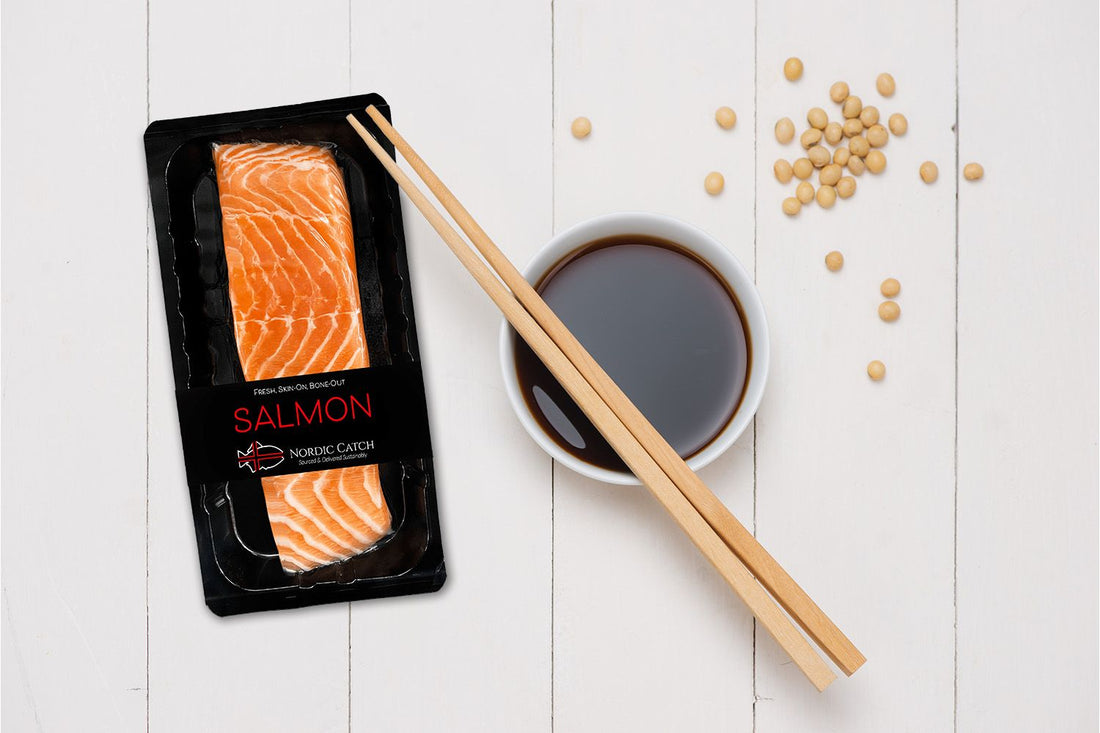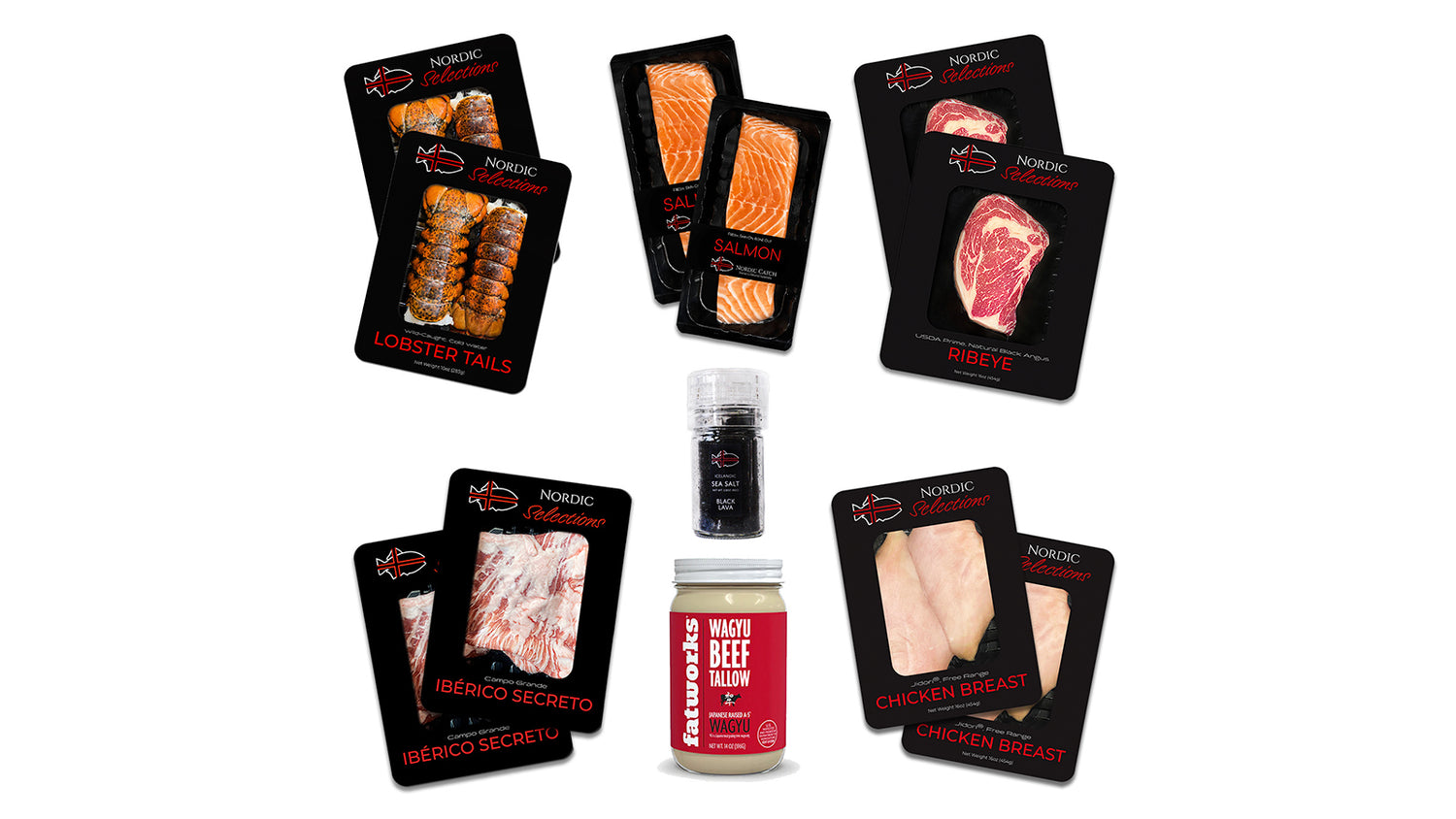
6 of the Healthiest Seafoods: Expert Choices for Health Benefits
Seafood is a treasure trove of nutrients and flavors, with each species offering unique health benefits — from protein-packed salmon to zinc-rich oysters and other fresh seafood items. However, not all seafood is created equal; some options pack a more nutritious punch than others. Let's explore the healthiest seafood options to add to your diet.
6 of the Healthiest Seafood Choices
Salmon
Salmon is among the healthiest fish. A 3-ounce serving provides omega-3 fatty acids well above the daily recommended intake, contributing significantly to heart and brain health. It contains antioxidants like astaxanthin, which reduce inflammation, and its high protein content makes it a brilliant choice if you're following a whole-food diet. Consider using sushi-grade salmon to make a salmon poke bowl for a light lunch.
Sardines
Small, oily fish with low mercury levels, sardines are an excellent source of nutrients: omega-3 fatty acids, which promote your heart and brain health, and calcium and vitamin D, which support your bone health. Sardines are also high in vitamin B12, essential for energy production and neurological function. And they contain selenium, an antioxidant that protects your cells from damage and supports immune function. Their high protein content (about 23 grams per 3.8-ounce tin) makes them a perfect option for muscle maintenance.
Cod
Cod is a lean, mild-flavored fish that's low in calories and fat but high in protein, making it a great choice if you're looking to maintain a healthy weight. It's also rich in essential nutrients like vitamin B12, niacin, and phosphorus, necessary for maintaining energy levels and strong bones. In the kitchen, cod is a highly versatile fish — you can bake, grill, or use it in stews for filling and tasty meals. Try searing it to make Sesame Cod Bok Choy, or bake the cod in panko breadcrumbs and serve it with a salad.
Trout
Trout, particularly freshwater varieties, is high in omega-3 fatty acids, which support your heart and brain health. It's also an excellent source of high-quality protein (6 grams per ounce), vitamins B12 and D, and minerals like selenium and potassium, all contributing to your overall health. In addition to its nutritional benefits, trout is typically lower in mercury than some other fish, making it a safer option if you plan to eat fish often.
Arctic Char
Arctic char is similar to salmon in its flavor and nutritional profile, making it an excellent alternative to add some variety to your home menu. Like salmon, Arctic char is rich in omega-3 fatty acids and provides significant protein, vitamin D, and B vitamins. Arctic char is also low in mercury, and its delicate flavor and firm texture make it ideal for grilling, searing, or baking. Try broiling this fish and pairing it with a savory tomato-based mixture for a flavorful Arctic char Matecumbe.
Scallops
Scallops are another healthy seafood choice. They offer a high-protein, low-fat option rich in essential nutrients like vitamin B12, magnesium, and potassium. They are low in calories and contain omega-3 fatty acids, which support cardiovascular health. Scallops are easy to prepare—quickly sear or grill them in just minutes, making for a convenient and nutritious meal any day of the week.
Seafood to Consume in Moderation
While seafood is a brilliant source of nutrients, including omega-3 fatty acids, lean proteins, and essential minerals, certain species should be consumed in moderation due to potential mercury concerns:
- Tuna
- Swordfish
- King mackerel
- Tilefish
- Shark
Pregnant women, breastfeeding mothers, and young children need to limit their intake of these fish.
Tips for Incorporating Healthy Seafood Into Your Diet
Pay attention to portions: Moderation is the key to reaping the nutritional benefits of seafood. The American Heart Association (AHA) recommends at least two servings of seafood, particularly low-mercury or heart-healthy options, each week. A serving typically consists of 3.5 ounces of cooked seafood or roughly 3/4 cup of flaked fish.
Select the healthiest items: Aim for omega-3-rich species like wild-caught Alaskan salmon, mackerel, and sardines. Shellfish like oysters, clams, and mussels are also low in mercury and high in vitamins and minerals, making them excellent choices.
Try different cooking methods: Healthy cooking methods are essential to preserve the nutritional value of your seafood. Grilling, baking, and steaming are recommended as they help retain the omega-3 fatty acids, vitamins, and minerals without adding unhealthy fats. For instance, grilling salmon with citrus fruits or fresh herbs can enhance the fish's flavor while minimizing the formation of harmful compounds.
Considerations When Choosing Seafood
Sustainability & environmental impact: Choosing sustainably sourced seafood is crucial for minimizing ecological impact, avoiding overfishing species, and contributing to habitat destruction. Programs like the Monterey Bay Aquarium's Seafood Watch offer guidelines for selecting sustainable seafood options.
Microplastic contamination: Microplastics in seafood is an emerging concern due to potential health risks, including inflammation and cellular damage. Although research is ongoing, it's wise to be mindful of this issue when consuming seafood, particularly species higher in the food chain, where microplastics can accumulate.
Mercury concerns: While seafood is nutritious, it's essential to be mindful of mercury levels in certain fish. Larger and longer-lived species like swordfish, king mackerel, and certain types of tuna accumulate higher levels of mercury, posing health risks, especially to pregnant women, children, and those with compromised immune systems.
Frequently Asked Questions
What is the nutritional value of seafood like salmon, sardines, and oysters?
Seafood like salmon, sardines, and oysters is rich in omega-3 fatty acids and essential minerals. It is a heart-healthy choice with broad nutritional benefits, including essential proteins and vitamins.
What is the difference between wild-caught and farm-raised fish?
Wild-caught fish live in natural environments and consume a natural diet, resulting in a lower fat content than farm-raised ones. Farm-raised fish are cultivated in controlled conditions, potentially leading to higher omega-3 content and risk of antibiotic use and other environmental issues.
Why is it necessary to understand where our seafood is sourced from?
Understanding where our seafood comes from helps us make sustainable choices and mitigates the risk of mercury exposure, especially in larger predatory fish. It also provides transparency about the seafood's overall quality and environmental impact.
What are some healthy cooking methods for seafood?
Healthy cooking methods for seafood include grilling, baking, and steaming. These methods help the seafood retain the maximum amount of nutrients.
Which seafood can you eat every day?
Smaller fish like sardines, mackerel, and trout can be safely consumed daily. They are usually low in mercury and other toxins while providing high nutrition. If you have health concerns, consult your doctor before incorporating fish into your diet.
What fish have the highest mercury levels?
Sharks, swordfish, and orange roughy fish have the highest mercury levels. Due to health risks, it's advisable to consume these types in moderation.

